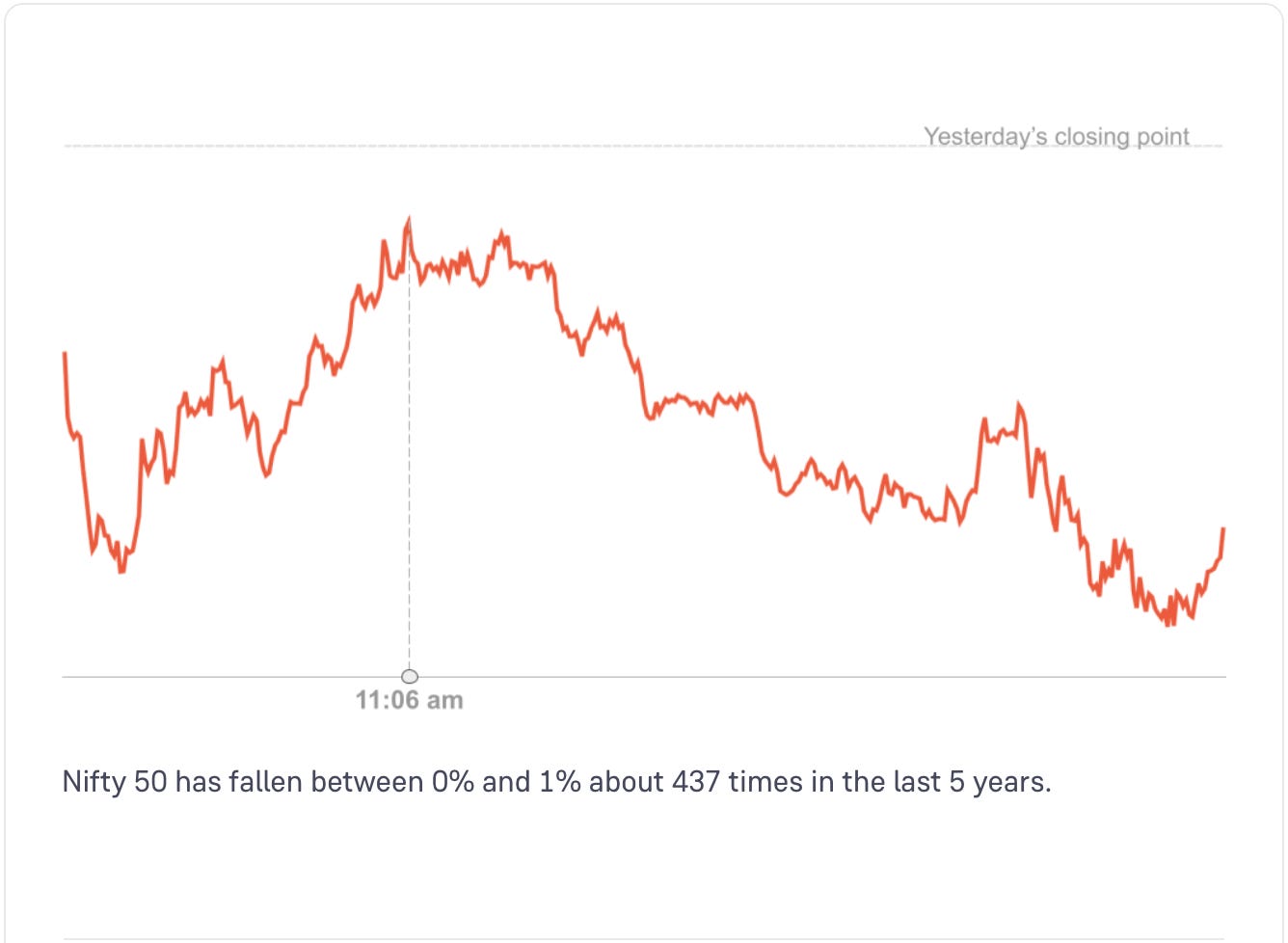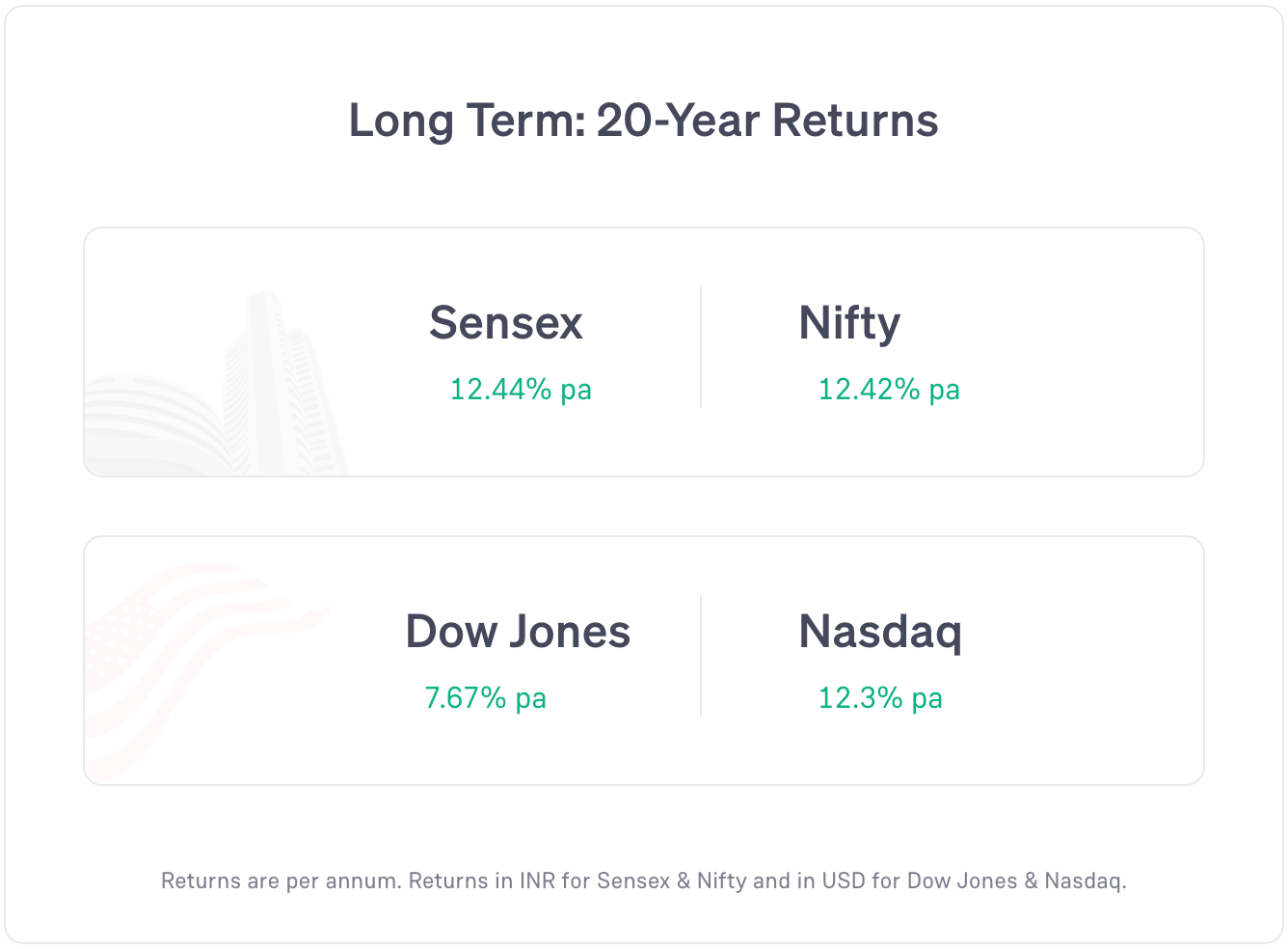India's first chip OSAT plant, industrial production grows in July, & more — Daily Digest
Thursday, 28 August 2025
Markets opened below yesterday’s closing point.
Nifty 50 fell in the second half of the day and closed in the red. The negative sentiment may have been driven by the US tariffs that took effect and FII selling.
All sectors’ stocks fell today except for the consumer durables stocks. IT stocks and realty stocks fell the most.
Global markets: US markets and most Asian markets rose and closed in green. Most European markets were in red (as of 6 pm IST).
News
India’s industrial production grew 3.5% year-on-year in July, a 4 month high (vs 1.5% in June). Manufacturing grew 5.4% (vs 3.7% in June).
India has extended the import duty exemption on cotton till 31 Dec 2025. Earlier, the exemption was till 30 Sept.
Vikran Engineering IPO has been subscribed 5.24 times. Retail subscription 5.23 times. IPO closes tomorrow (29 Aug).
Stocks Updates
CG Power: company subsidiary ‘CG Semi’ opened India’s first chip OSAT plant in Sanand, Gujarat with a Rs 7,600 crore investment. It aims to start production from 2026.
Infosys: partnered with Mastercard to enhance Mastercard Move (a global payments platform), providing faster and more secure cross-border payments for financial institutions.
HDFC Bank: allotted 7.67 billion bonus shares according to 1:1 ratio, to its eligible shareholders.
TCS: partnered with a Philippines-based pharma company, Unilab, to upgrade its core systems with a cloud-led SAP.
Power Grid: won a project to build and run a renewable energy transmission system in Davanagere, Karnataka.
Samvardhana Motherson: incorporated a new wholly owned subsidiary, Motherson Manufacturing Services Ltd, for manufacturing and related services.
Word of the Day
Stress Testing
It is a way to check how well a bank or a financial institution would perform in stressful situations
These stressful situations can be market crashes, loan defaults, economic slowdowns, currency fluctuations, etc.
It is a simulation that tests for ‘what if’ conditions — both historical or hypothetical.
It helps banks prepare for risks, avoid big losses, and ensures they have enough money to stay safe even in a crisis.
Performing such tests prepares the institution, its customers, and the broader financial system from potential crises.
6 Day Course
Theme: why SIP works
Day 4: Thursday
One of the biggest mistakes investors make with SIPs is to stop or pause them when the markets are down.
You must understand that SIPs are designed to use averaging as an advantage.
When the markets are down, the stocks’ and mutual funds’ units are the cheapest priced.
This allows for greater returns when the stocks or mutual funds recover.
If you only invest during good times, you are essentially buying only at higher prices.
So the average returns will be lower.
This is assuming that the stock or mutual fund is good and will go up again.
Featured Question
“Yesterday you said about ipo. Though ipo prices are fixed before allotment how does it gets listed in premium/discount? If it is listed in premium, where is that cash comes from and in case of discount where that money goes to?”
IPO prices are fixed for subscription.
But the moment the share is introduced in the share market on the listing day, people can buy or sell these shares.
As we know, the share price is decided by the buying and selling of shares — supply and demand.
So, if an IPO lists on the exchange and many investors are trying to immediately sell the shares, the share price falls — this is when we say the IPO listed at a discount of x%.
If many investors are trying to buy those newly listed IPO shares and there are not enough sellers, the share price goes up — this is when we say the IPO listed at a premium of x%.
You must remember, once shares are on the exchange, the buying and selling occurs between the shareholder and the buyer.
The company does not make any money from these trades.
The transaction is purely between the buyer and seller.
Did you like this edition?
Leave a feedback here!






